The term weather describes the state of the atmosphere at a particular geographic locationat at a given point in time. The interaction between air pressure, humidity, wind, cloudiness and temperature impact on weather conditions. Weather describes the degree to which it is hot or cold, wet or dry, calm or stormy, clear or cloudy. Most weather phenomena occur in the lowest layer of the planet’s atmosphere.
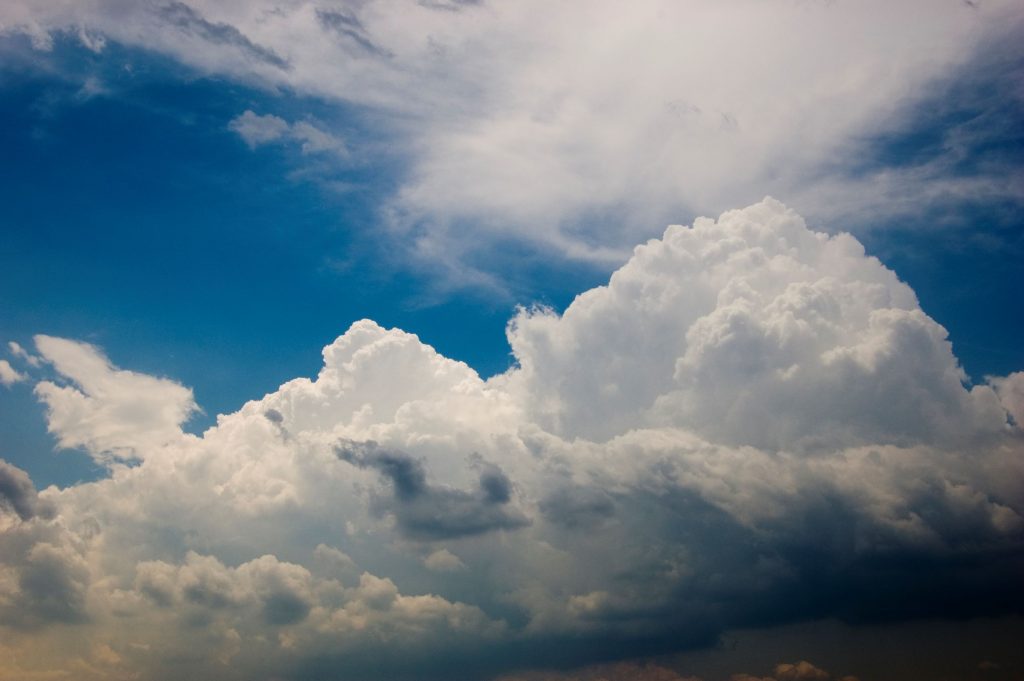
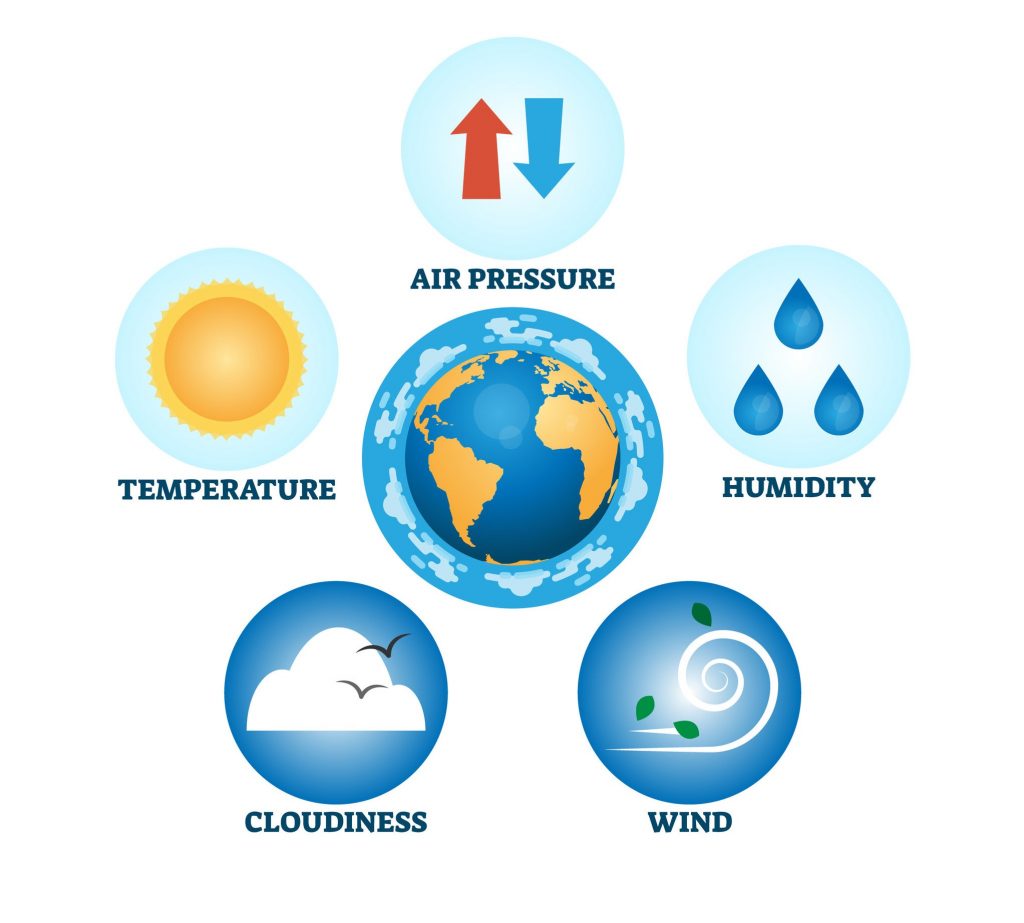
Temperature, the amount and form of airborne moisture, cloudiness, and the strength of the wind are all different components of our weather.
Clouds
Clouds form when water vapor in the air condenses into visible water droplets or ice crystals. This occurs when the air is saturated and is unable to hold all the water it contains in vapor form, so it starts to condense into a liquid or solid form. These water droplets form on tiny particles, like dust, that are floating in the air.
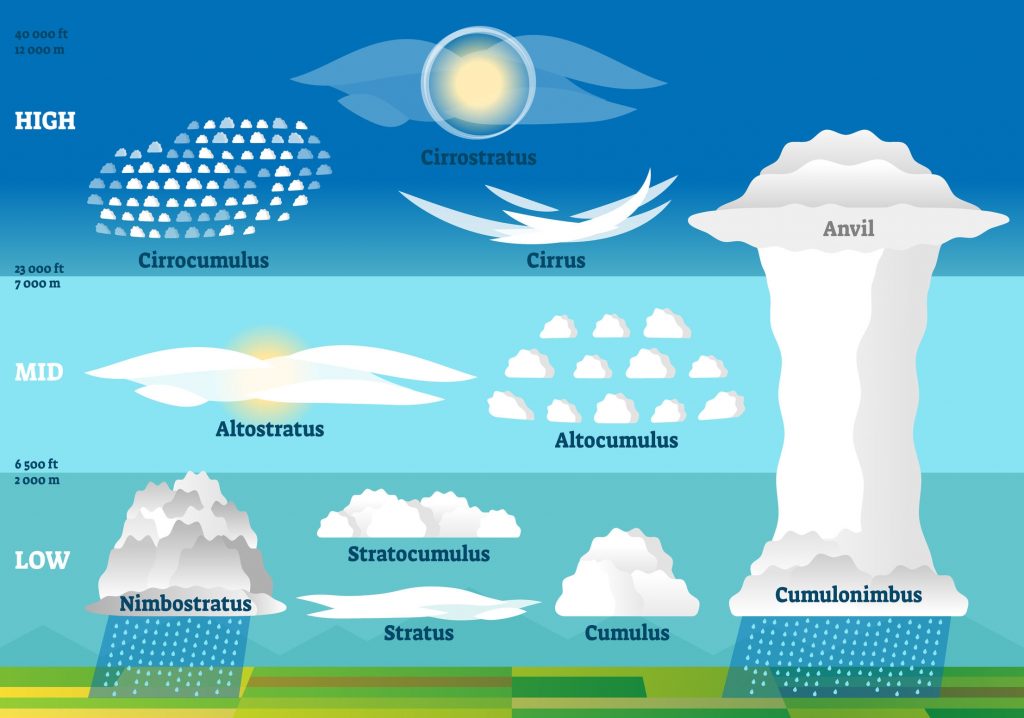
At a warm front, where a warm air mass slides above a cold air mass, the warm air is pushed upward forming many different types of clouds – from low stratus clouds to midlevel altocumulus and altostratus clouds, to high cirrus, cirrocumulus and cirrostratus clouds. Clouds that produce rain like nimbostratus and cumulonimbus are also common at warm fronts.
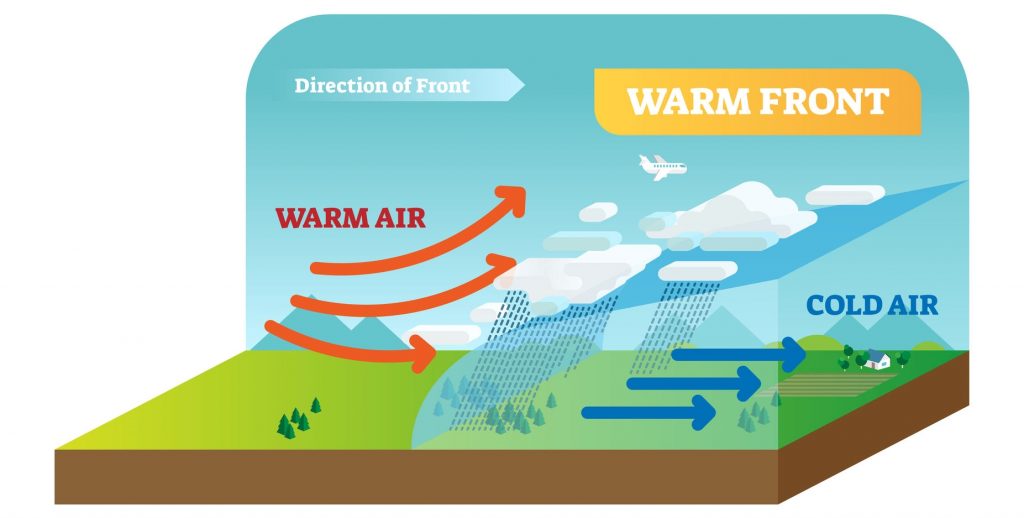
A warm front is the boundary between a mass of warm air and a retreating mass of cold air. Warm air is less dense than cold air, so overrides, the cold air.
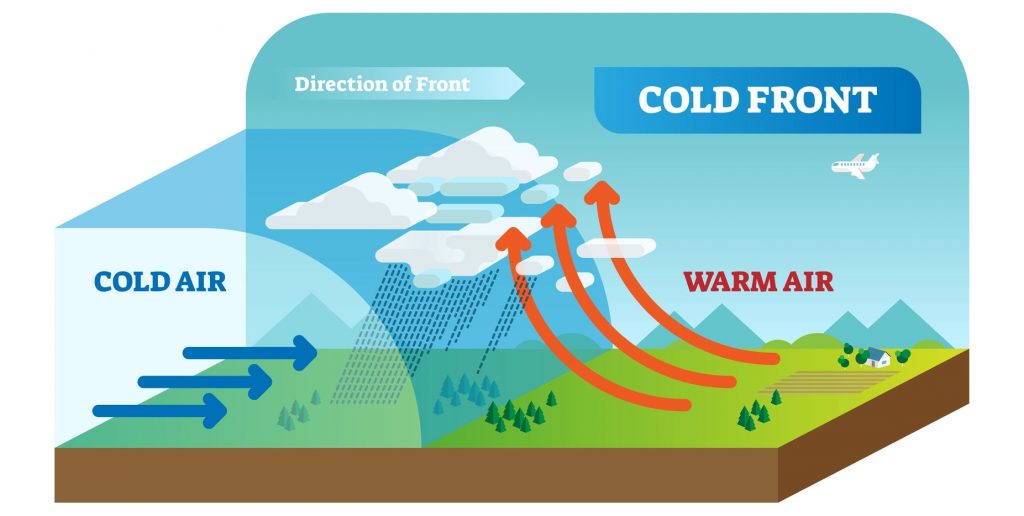
A cold front is the leading edge of a cooler mass of air at ground level that replaces a warmer mass of air and lies within a pronounced surface trough of low pressure.
At a cold front, where heavy a cold air mass pushes a warm air mass upward, cumulous clouds are common. They often grow into cumulonimbus clouds, which produce thunderstorms. Nimbostratus, stratocumulus, and stratus clouds can also form at cold front.
Rainshadow Effect
A rain shadow effect refers to land where rain is blocked by mountains. Wet weather systems drop precipitation on one side of the mountain. On the other side of the mountain—the rain shadow side—all that precipitation is blocked.
Evaporated moisture from water bodies like oceans and large lakes is carried by the prevailing onshore breezes towards the drier and hotter inland areas. When encountering elevated landforms, the moist air is driven upslope towards the peak, where it starts to precipitate. If the landforms are tall and wide enough it blocks most of the precipitation falls on the the windward side and it doesn’t make it past the top. The air also forms winds on the leeward side that absorb moisture casting a broad “shadow” of dry climate region behind the mountains. The resulting landscapes and vegetation are usually shrublands or deserts.
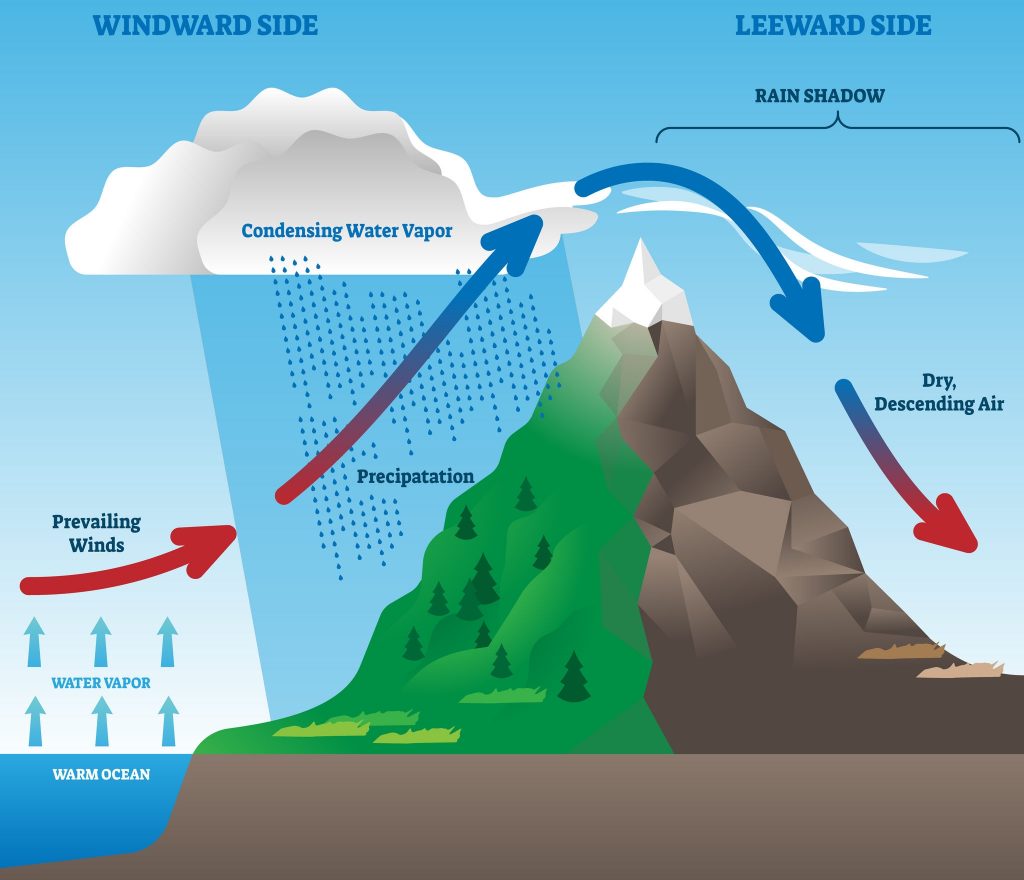
What is the difference between Climate and weather?
The climate is based on long term trends and is measured over years whereas weather is short term and changes rapidly.

